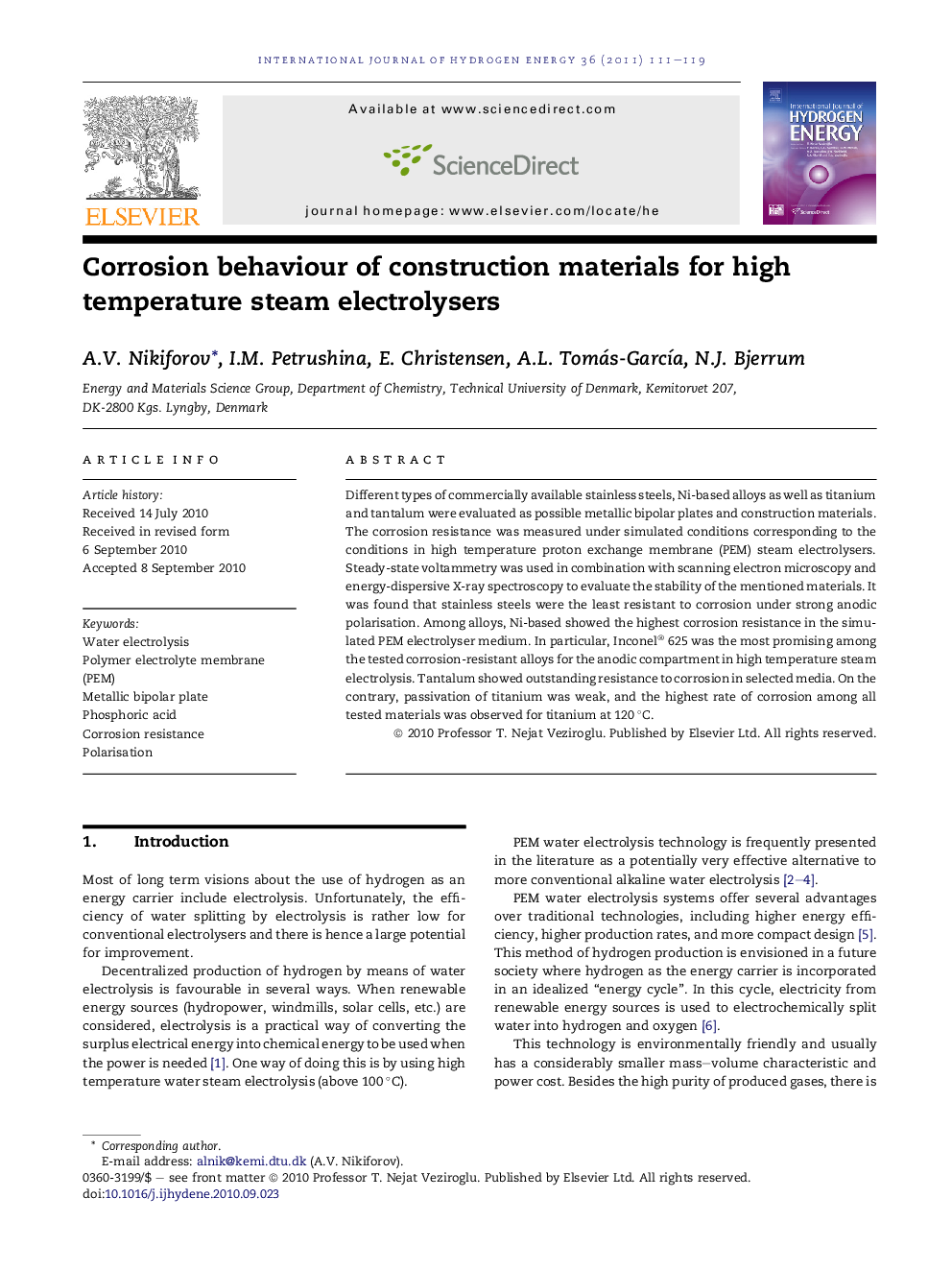| Article ID | Journal | Published Year | Pages | File Type |
|---|---|---|---|---|
| 1277759 | International Journal of Hydrogen Energy | 2011 | 9 Pages |
Different types of commercially available stainless steels, Ni-based alloys as well as titanium and tantalum were evaluated as possible metallic bipolar plates and construction materials. The corrosion resistance was measured under simulated conditions corresponding to the conditions in high temperature proton exchange membrane (PEM) steam electrolysers. Steady-state voltammetry was used in combination with scanning electron microscopy and energy-dispersive X-ray spectroscopy to evaluate the stability of the mentioned materials. It was found that stainless steels were the least resistant to corrosion under strong anodic polarisation. Among alloys, Ni-based showed the highest corrosion resistance in the simulated PEM electrolyser medium. In particular, Inconel® 625 was the most promising among the tested corrosion-resistant alloys for the anodic compartment in high temperature steam electrolysis. Tantalum showed outstanding resistance to corrosion in selected media. On the contrary, passivation of titanium was weak, and the highest rate of corrosion among all tested materials was observed for titanium at 120 °C.
